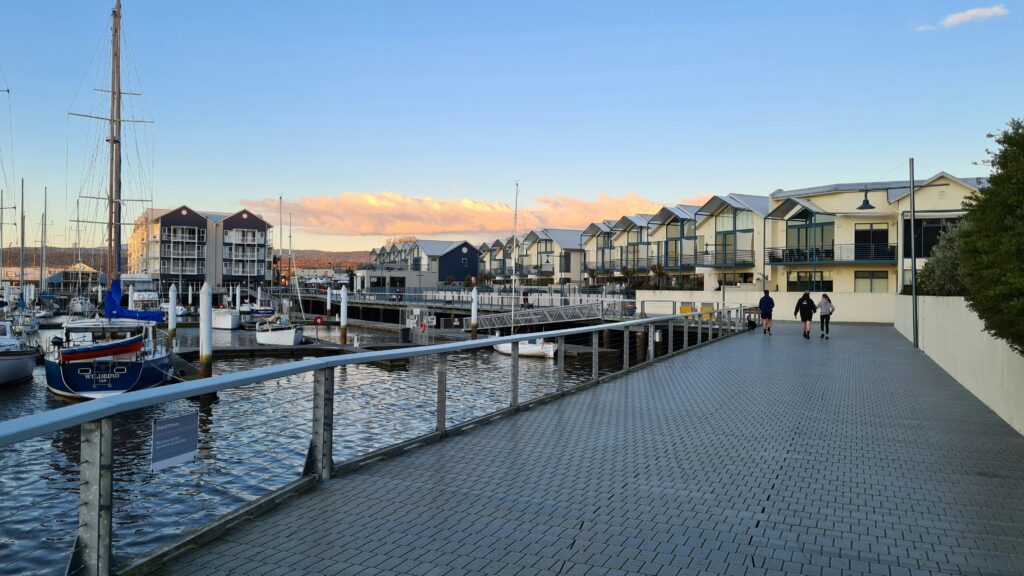
Overview Of Launceston
Launceston is a picturesque city located in the north of Tasmania, Australia’s island state. Known for its blend of colonial heritage, natural beauty, and vibrant culture, Launceston is Tasmania’s second-largest city and a gateway to some of the island’s most stunning landscapes. The city offers a relaxed atmosphere with a rich array of parks, gardens, historic architecture, and culinary delights, making it a perfect destination for travelers seeking a mix of nature and culture.
Situated at the meeting point of the North Esk and South Esk Rivers, Launceston is surrounded by rolling hills and fertile farmlands, contributing to its reputation as a food and wine destination. Its friendly community and charming streets invite visitors to explore Tasmania’s unique heritage and outdoor wonders.
History & Cultural Significance
Launceston’s history dates back over 40,000 years with the land traditionally inhabited by the Palawa people, the Indigenous Tasmanian custodians. European settlement began in 1806, making Launceston one of Australia’s oldest cities. The city rapidly developed due to its strategic location and fertile lands, becoming a hub for agriculture, industry, and trade.
The city is known for its well-preserved colonial architecture, including historic buildings, bridges, and churches, which reflect its 19th-century prosperity. Cultural life thrives through museums, galleries, and theatres that showcase both Indigenous and European heritage.
Launceston also serves as a center for Tasmanian arts, hosting many festivals and supporting a lively local arts community, while celebrating its history through sites like the Queen Victoria Museum and Art Gallery.
Best Time to Visit & Best Season to Visit
The best time to visit Launceston is during the spring and summer months from September to February. During this time, the weather is mild and pleasant, and the city’s parks and gardens are in full bloom. This season is also ideal for outdoor activities, including exploring nearby national parks and enjoying local food and wine festivals.
Autumn (March to May) is another wonderful season to visit when the surrounding countryside is adorned with vibrant fall colors, offering stunning scenery and a quieter atmosphere.
Winter (June to August) can be cold and damp, but it is also a cozy time to explore indoor attractions like museums and enjoy hearty Tasmanian cuisine.
Weather Guide
Launceston experiences a temperate oceanic climate characterized by four distinct seasons. Summers are generally warm, with average highs between 20°C to 25°C (68°F to 77°F), perfect for exploring the outdoors. Winters are cool to cold, with average highs around 10°C to 12°C (50°F to 54°F) and occasional frosts.
Spring and autumn bring mild temperatures and changing foliage, with rainfall fairly evenly distributed throughout the year. The climate supports a lush environment, with river valleys and parks providing beautiful scenery year-round.
Festivals and Events to Experience
Launceston hosts a variety of festivals and events celebrating art, food, music, and culture. The Launceston Festival is a vibrant community event held annually in October, featuring music performances, markets, and street entertainment.
The Festivale is Tasmania’s largest food and wine festival, drawing crowds to sample local produce, wines, and gourmet delights while enjoying live music and family activities.
Other notable events include the Queen Victoria Museum exhibitions, Midlands Folk Festival, and various arts and theater performances throughout the year. Seasonal farmers markets and craft fairs also highlight Launceston’s rich agricultural heritage.
Best Places to Visit & Description
Cataract Gorge Reserve: A stunning natural reserve just minutes from the city center, featuring walking trails, a suspension bridge, a swimming pool, and beautiful landscaped gardens. It offers panoramic views and opportunities for wildlife spotting.
Tamar Valley: Known for its world-class wineries and scenic beauty, the Tamar Valley is perfect for wine tours and exploring quaint towns along the river.
Queen Victoria Museum and Art Gallery: One of the largest regional museums in Australia, it showcases Tasmania’s natural history, Indigenous culture, and art collections.
City Park: A historic park featuring a Japanese macaque enclosure, beautiful gardens, a conservatory, and plenty of space for picnics and relaxation.
Boags Brewery: Take a guided tour of one of Tasmania’s oldest breweries and learn about its history and brewing process.
Historic Streets and Architecture: Wander through the city’s streets to admire colonial-era buildings, charming cafes, and boutique shops.
Things to Do
Explore Cataract Gorge: Walk, cycle, or take the chairlift over the gorge and enjoy swimming or picnicking in this unique natural setting.
Wine tasting in Tamar Valley: Visit vineyards for cellar door tastings and sample some of Tasmania’s finest cool-climate wines.
Visit museums and galleries: Discover Tasmania’s history and art at the Queen Victoria Museum and Art Gallery and local galleries.
Take a food tour: Experience Tasmania’s fresh produce and gourmet cuisine at local markets, restaurants, and festivals.
Cycle or hike: Enjoy numerous trails around the city and surrounding countryside for all skill levels.
Attend festivals: Participate in local cultural events and food festivals to experience Launceston’s vibrant community spirit.
Relax in City Park: Spend a leisurely day exploring the gardens, playgrounds, and wildlife enclosures.
Day trips: Explore nearby attractions like the historic town of Evandale, Tamar Island Wetlands, or the picturesque waterfalls of the Tasmanian wilderness.

